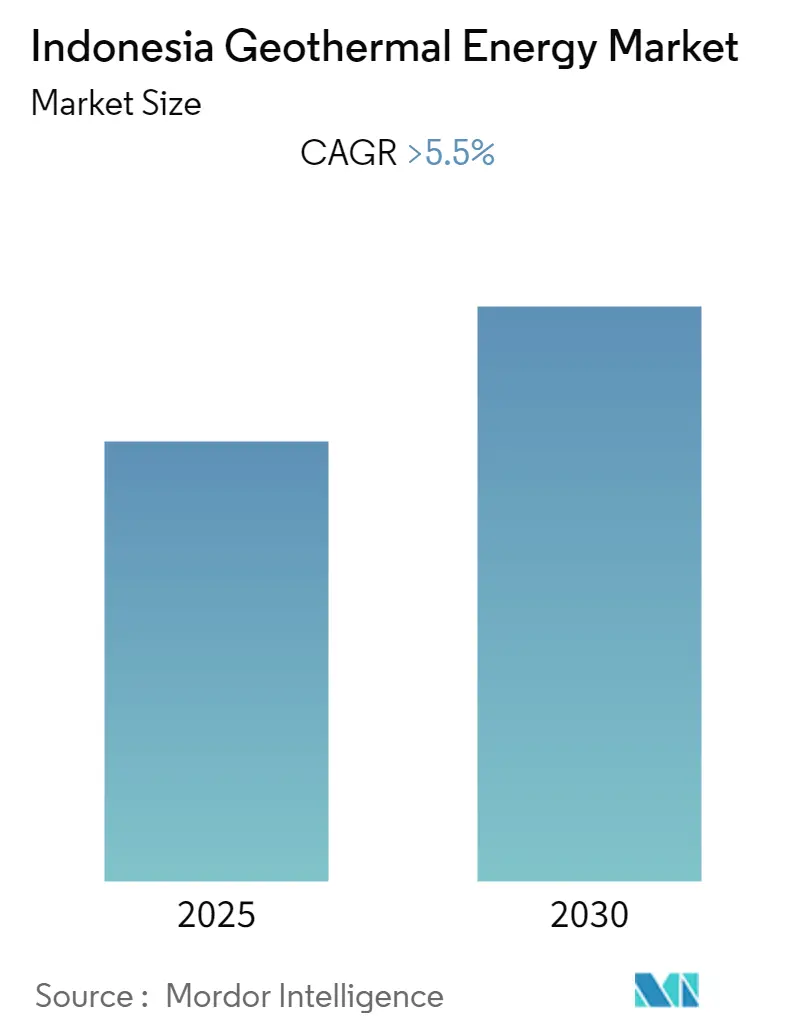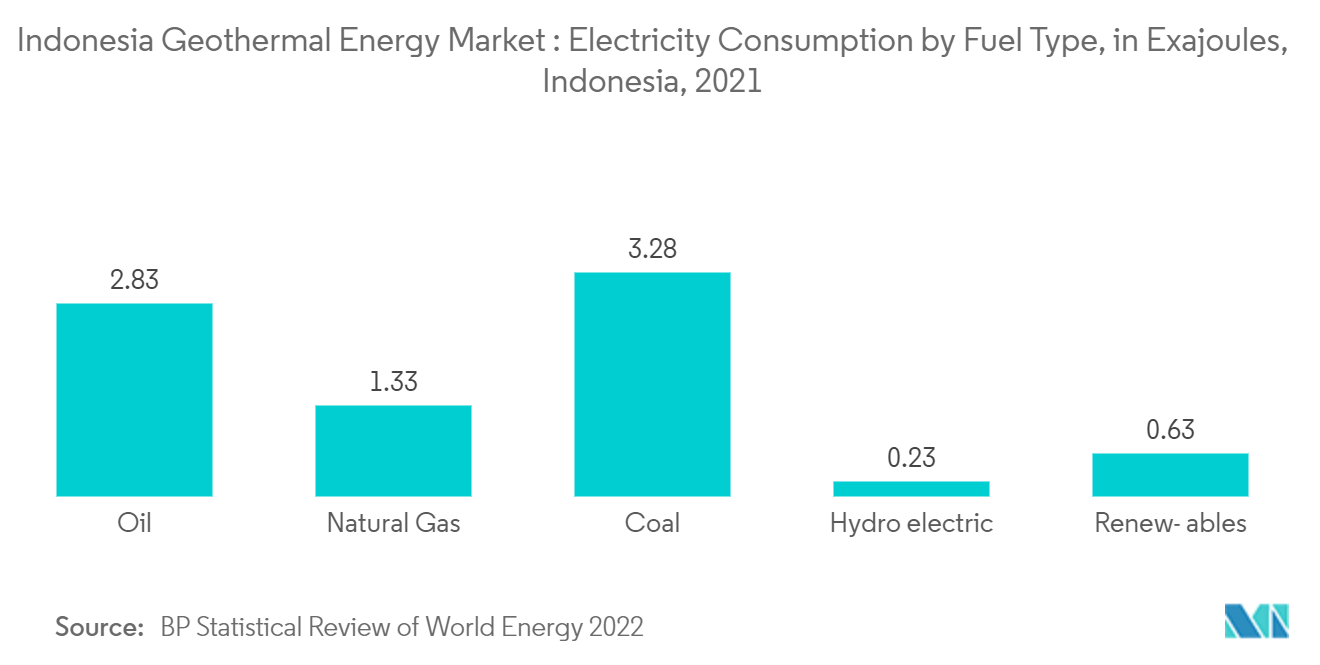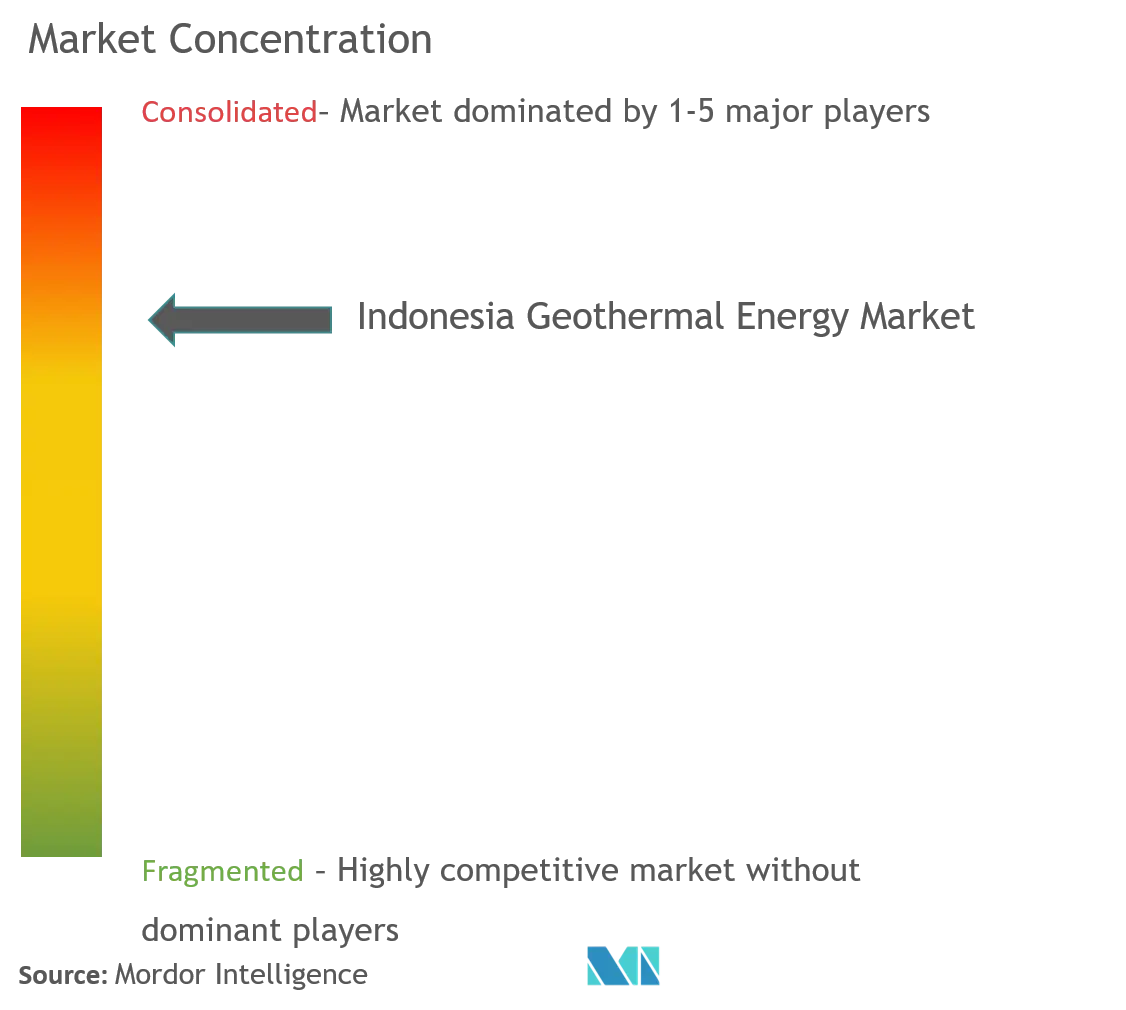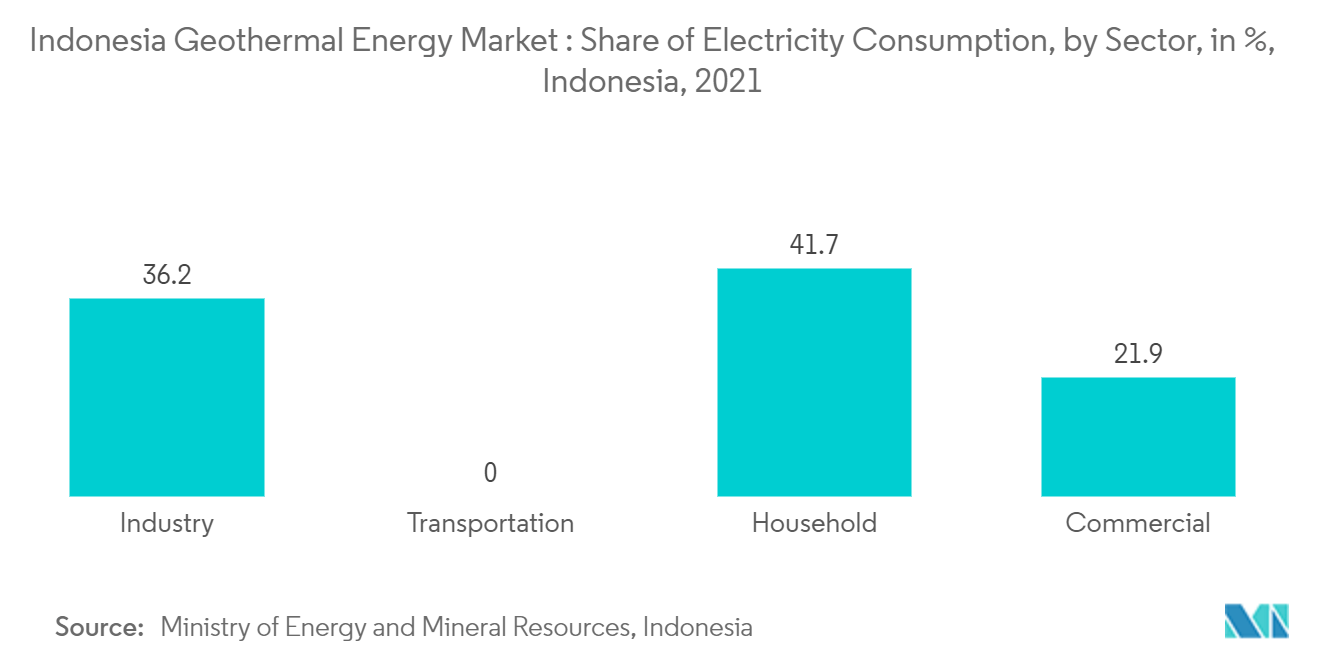
| Study Period | 2020 - 2030 |
| Base Year For Estimation | 2024 |
| Forecast Data Period | 2025 - 2030 |
| Historical Data Period | 2020 - 2023 |
| CAGR | 5.50 % |
| Market Concentration | Medium |
Major Players
*Disclaimer: Major Players sorted in no particular order |
Indonesia Geothermal Energy Market Analysis
The Indonesia Geothermal Energy Market is expected to register a CAGR of greater than 5.5% during the forecast period.
COVID-19 had a detrimental effect on the market. Presently, the market has reached pre-pandemic levels.
- Over the long term, the primary driver for the market will be the government's efforts to reduce the country's dependency on fossil fuels and thereby reduce CO2 emissions. Increasing electricity demand is likely to drive the market during the forecast period.
- On the other hand, geothermal energy is more expensive than power from fossil fuels, and there is more competition from other renewable energy sources, like solar and wind, which is expected to slow market growth during the forecast period.
Nevertheless, with an estimated population of 296 million and an increased urbanization rate of 71% by 2030, electricity demand is expected to grow. The Indonesian government wants to cut CO2 emissions by 29% by 2030. This is most likely to be done by increasing the use of renewable energy to meet the growing electricity demand. This is likely to give the geothermal market a chance to grow in the near future.
Indonesia Geothermal Energy Market Trends
Increasing Demand for Electricity is Likely to Drive the Market
- Indonesia's need for electricity has grown over the years as the country's population and cities have grown. In 2021, the electricity consumption in Indonesia accounted for 168.38 million BOE (barrel oil equivalent).
- In 2021, the total electricity consumption of the household sector in Indonesia was nearly 70,289 thousand BOE. Households consumed the highest percentage of electricity, with almost 41.7% of the total electricity consumed.
- It is estimated that the household electricity demand in Indonesia is likely to increase to 350 TWh. In contrast, demand in the industrial and commercial sectors is expected to rise to about 80 TWh and 70 TWh, respectively.
- The use of electronic appliances in the household sector is expected to be the primary driver of the increase in electricity consumption. In contrast, the metal, chemical, food, and textile industries are expected to be the major drivers for industrial electricity consumption.
With a growing population, Indonesian households will likely grow to almost 80 million by 2050. This will likely increase the amount of electricity used in the coming years. Geothermal energy as a possible source of electricity is expected to grow over the next few years because the government is trying to increase the amount of electricity made from renewable energy.
Upcoming Coal Fired Power Plant is Likely to Restrict the Market Growth
- In 2021, Indonesia's power plant installed capacity increased to nearly 74,532.94 MW, which was around 72,750.73 MW compared to the capacity in 2020. With a total installed capacity of about 51.8%, steam power plants dominated the power plant industry in 2021.
- In 2021, primary energy consumption by fuel accounted for 8.31 exajoules, which were generated from 39% coal, 16% natural gas, 34% oil, and 7.5% renewables.
- The country has a high reliance on coal-based power plants; thus, there are plans to build new coal power plants with existing coal power plants in operation. In 2021, energy consumption from coal accounted for 87.82 million BOE (barrel oil equivalent).
- In November 2022, the Indonesian government permitted the building new coal plants that had already been bid out and had a total capacity of 13 gigawatts. The country's 10-year energy plan for 2021-2030 lays out the strategy. Notably, President Joko Widodo signed legislation into law in 2022, allowing the development of "captive coal plants."
- Increasing the capacity of coal-fired power plants is expected to make up a big part of how electricity is made. It will likely meet most of the growing demand for electricity over the next few years. This is expected to slow the growth of the country's geothermal energy and other renewable sources.

Indonesia Geothermal Energy Industry Overview
The Indonesia geothermal energy market is moderately consolidated. Some of the key players in the market ( not in particular order ) include Enal SpA, Toshiba Energy Systems & Solutions Corporation, BCPG Public Company Limited, PT Supreme Energy, and Sarulla Operations Ltd.
Indonesia Geothermal Energy Market Leaders
-
Enel SpA
-
Toshiba Energy Systems & Solutions Corporation
-
BCPG Public Company Limited
-
PT Supreme Energy
-
Sarulla Operations Ltd.
- *Disclaimer: Major Players sorted in no particular order

Indonesia Geothermal Energy Market News
- December 2022: In Indonesia, Mitsubishi Power is building its geothermal infrastructure. The business has obtained an order to make a 55-MW unit at the Lumut Balai Unit 2 geothermal power station from PT Pertamina Geothermal Energy (PGE), a subsidiary of the state-owned oil and gas group PT Pertamina.
- January 2022: A geothermal power facility in Indonesia that costs more than USD 700 million has begun commercial operations. PT Supreme Energy Rantau Dedap (SERD), a joint venture comprising PT Supreme Energy, Engie SA, Marubeni Corporation, and Tohoku Electric Power Co Inc, constructed the Phase-1 Rantau Dedap Geothermal Power Generation project with a capacity of 91.2 MW.
Indonesia Geothermal Energy Industry Segmentation
Renewable energy derived from the Earth's core is known as geothermal energy. It originates from heat produced during the planet's initial creation and the radioactive decay of elements. In the Earth's core, rocks and liquids contain this thermal energy. Geothermal energy is a safe, sustainable resource that may be used to generate both heat and electricity.
The market sizing and forecasts have been done based on installed capacity (megawatts).
Indonesia Geothermal Energy Market Research FAQs
What is the current Indonesia Geothermal Energy Market size?
The Indonesia Geothermal Energy Market is projected to register a CAGR of greater than 5.5% during the forecast period (2025-2030)
Who are the key players in Indonesia Geothermal Energy Market?
Enel SpA, Toshiba Energy Systems & Solutions Corporation, BCPG Public Company Limited, PT Supreme Energy and Sarulla Operations Ltd. are the major companies operating in the Indonesia Geothermal Energy Market.
What years does this Indonesia Geothermal Energy Market cover?
The report covers the Indonesia Geothermal Energy Market historical market size for years: 2020, 2021, 2022, 2023 and 2024. The report also forecasts the Indonesia Geothermal Energy Market size for years: 2025, 2026, 2027, 2028, 2029 and 2030.
Our Best Selling Reports
Indonesia Geothermal Energy Industry Report
Statistics for the 2025 Indonesia Geothermal Energy market share, size and revenue growth rate, created by Mordor Intelligence™ Industry Reports. Indonesia Geothermal Energy analysis includes a market forecast outlook for 2025 to 2030 and historical overview. Get a sample of this industry analysis as a free report PDF download.





